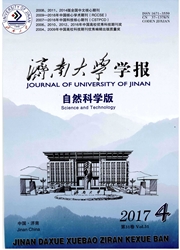

 中文摘要:
中文摘要:
采用除趋势典范对应分析法(DCCA),对大兴安岭24个冻土湿地植物群落进行排序,对划分出的3个不同类型多年冻土区的湿地植物群落的物种多样性,以及生活型和水分生态型等生态特征进行了环境梯度分析。结果表明:随着纬度的降低,年平均气温和年平均日照时间逐渐增大,年平均降水量和年平均湿度逐渐减小,调查的24个冻土湿地可划分为3组。从大片多年冻土区到大片-岛状多年冻土区,再到稀疏岛状多年冻土区,灌木多样性逐渐减小(p〈0.05),草本植物多样性逐渐增加(p〈0.05);中生植物种类所占比例分别为38.5%、55.9%和64.4%,沼生植物的重要值逐渐减小(p〈0.05),中生和旱生植物的重要值逐渐增大(p〈0.05),表明冻土湿地的土壤水分条件逐渐中生化,甚至出现旱生化趋势。地面芽植物在3个多年冻土区的湿地植物群落中始终占优势地位,高位芽和地下芽植物次之,反映了该区冬季漫长、严寒而潮湿,夏季较短的气候特征。大片-岛状多年冻土区作为大片多年冻土区和稀疏岛状多年冻土区的过渡区,其湿地植物群落的物种多样性和生态特征与稀疏岛状多年冻土区更相近。
 英文摘要:
英文摘要:
Aims Changes in permafrost wetland plant communities were indicators of the retreat of permafrost in the Da Hinggan Mountains in China.Our objective was to understand the changes in species diversity and ecological characteristics of permafrost wetland plant communities along environmental gradients as the keys to predict changes in permafrost and permafrost wetlands in response to global warming.Methods We analyzed the distribution of 24 permafrost wetland plant communities in the Da Hinggan Mountains using detrended canonical correspondence analysis(DCCA).Species diversity,life forms and hydro-ecotypes of permafrost wetland plant communities were compared in three types of permafrost using multiple comparisons in ANOVA.Important findings The 24 permafrost wetland plant communities were classified into three groups according to three types of permafrost.From the predominantly continuous permafrost to the sparsely island permafrost to the predominantly continuous and island permafrost,shrub diversity decreased(p〈 0.05),herbaceous diversity increased(p〈 0.05),the percentage of mesophytes was 38.5%,55.9% and 64.4%,respectively,the importance value decreased for helophytes(p 〈0.05) and increased for mesophytes and xerophiles(p 〈0.05),suggesting that the soil moisture tended to a moderate amount of moisture,and even drought.Hemicryptophytes were dominant and phanerophytes and geophytes were subdominant in the three types of permafrost,suggesting short summers and long,cold,wet winters in the areas.The species diversity and ecological characteristics of permafrost wetland plant communities in the predominantly continuous and island permafrost were similar to that in the sparsely island permafrost.
 同期刊论文项目
同期刊论文项目
 同项目期刊论文
同项目期刊论文
 期刊信息
期刊信息
